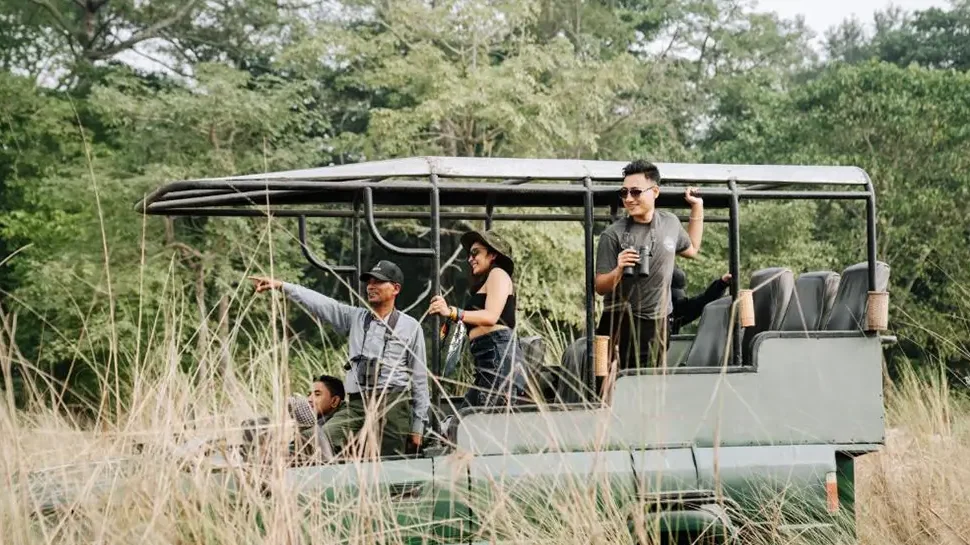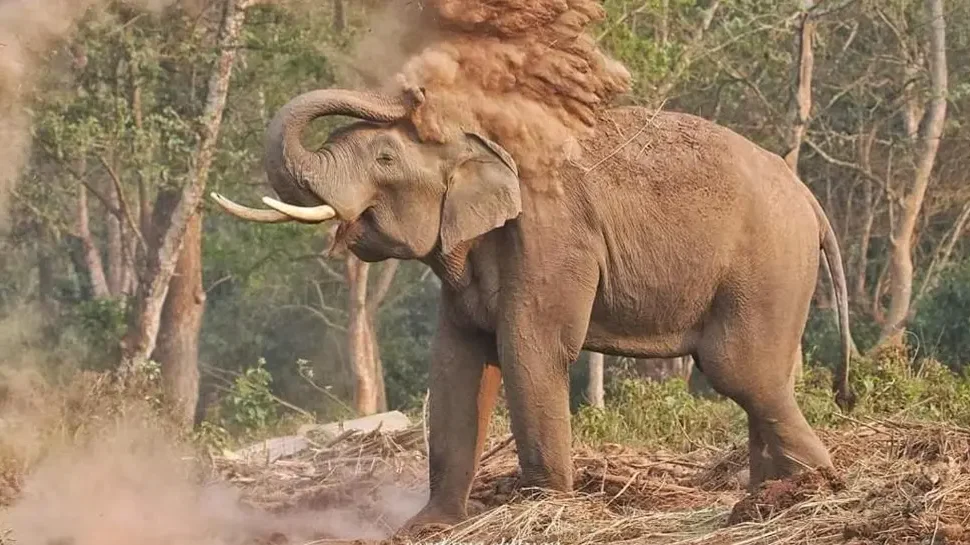Table of Contents
Nestled in the subtropical lowlands of Southern Nepal, this park is the foremost wildlife destination of the country and a UNESCO World Heritage Site for its incredible biodiversity. The park, which covers more than 932 square kilometres, is home to one-horned rhinoceros, the ferocious Bengal tiger, the gharial crocodile, and over 500 species of birds—an absolute paradise for nature lovers and wildlife photographers. Among the many months to visit this natural haven, January stands out for its special charm.
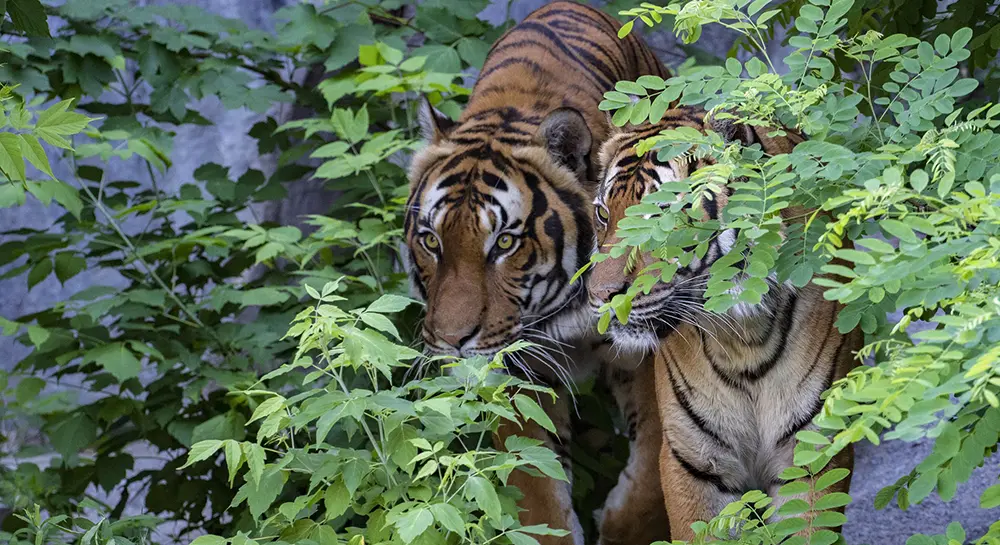
With the dry winter in Nepal, the climate turns in favour of cool mornings, warm afternoons, and crisp evenings—for some excellent outdoor activities. The dry weather also allows for clear skies, short grasses, and adequate visibility to view animals as they gather around water holes or stroll the face of open landscapes. Additionally, in January, from Siberia and Central Asia come thousands of migratory birds, instantly turning the Chitwan wetlands into an avian activity wonderland.
In addition to wildlife, the winter season has a colourful, upbeat atmosphere, giving travellers the opportunity to combine their safaris with cultural experiences among the indigenous Tharu community. Altogether, Chitwan Jungle Safari in January promises an unforgettable blend of wildlife encounters, scenic beauty, and cultural warmth.
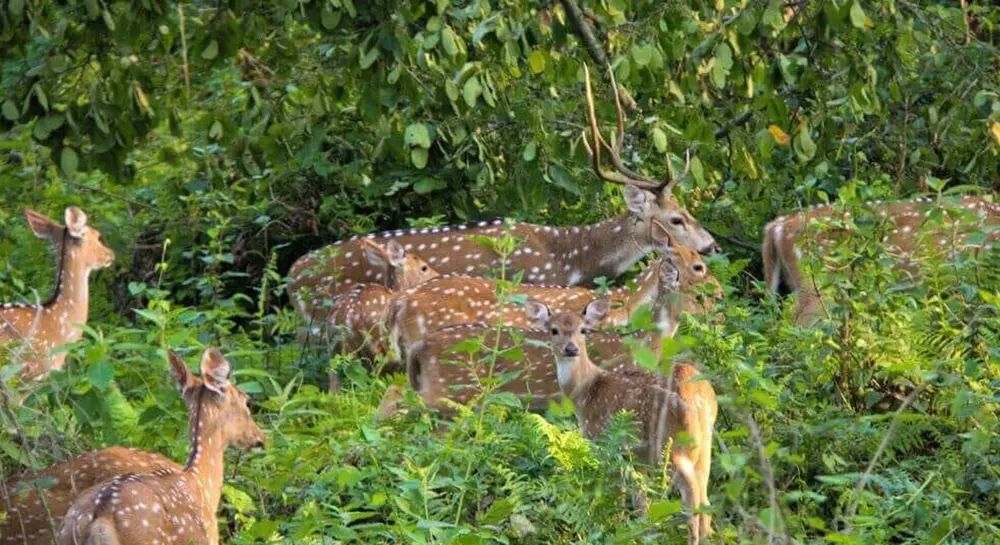
Weather and Climate in January
- Mild Temperatures: Cool morning and evening temperatures are about 8 to 10°C, with pleasant and warm daytime temps in the range of 20 to 24°C, attractive for daytime outdoor exploration.
- Dry Season Perks: January is within the dry season; thus, the skies stay clear, and rainfall is all but absent, creating a perfect environment for road conditions and smooth travel.
- Wildlife Visibility: Shorter grasses and limited water sources tend to draw animals out, making safari sightings easier and more frequent.
- Perfect Photography Weather: Crisp air and full daylight help in making this period gracious with excellent visibility and photography.
- Comfortable Jungle Walks: Cooler conditions make jungle walks, a.k.a. nature walks and birdwatching, way more enticing than during the scorching months.
Wildlife Sightings in January
One-Horned Rhinoceros
Chitwan is world-famous for its population of endangered one-horned rhinoceroses. In January, the dry grasslands and open riverbanks provide excellent opportunities to see them grazing or wallowing near waterholes. Jeep safaris almost guarantee their presence, making this month one of the best times for sightings.
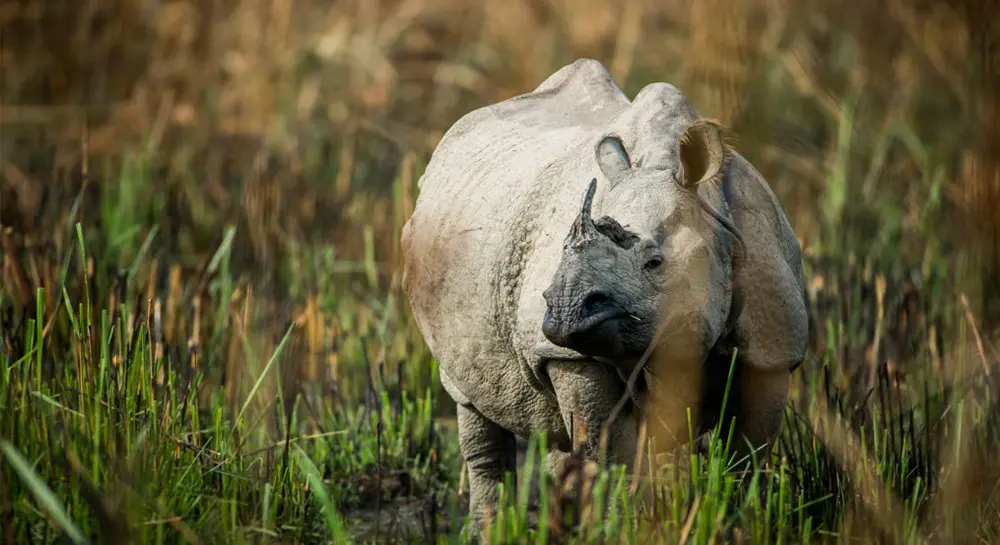
Royal Bengal Tiger
The elusive The Bengal tiger is notoriously shy, but January offers higher chances of spotting it. Cooler weather often draws tigers out during daylight hours, especially near riverbanks and grasslands where prey animals gather. While still rare, the winter season significantly improves the likelihood of encountering this majestic predator.
Elephants, Sloth Bears, and Gaur
Large mammals like wild elephants, sloth bears, and gaur—the massive wild bison—are also active in January. Elephants may be spotted foraging in forest edges, while sloth bears wander in search of termites and fruits. Herd animals like gaur often graze openly in Chitwan’s grassland areas.
Crocodiles and Gharials
The cooler, dry season makes reptiles more visible along Chitwan’s rivers. Sunny mornings reveal marsh mugger crocodiles and endangered gharials basking on sandy banks. Canoe rides on the Rapti River are especially rewarding in January, offering close yet safe views of these ancient reptiles.
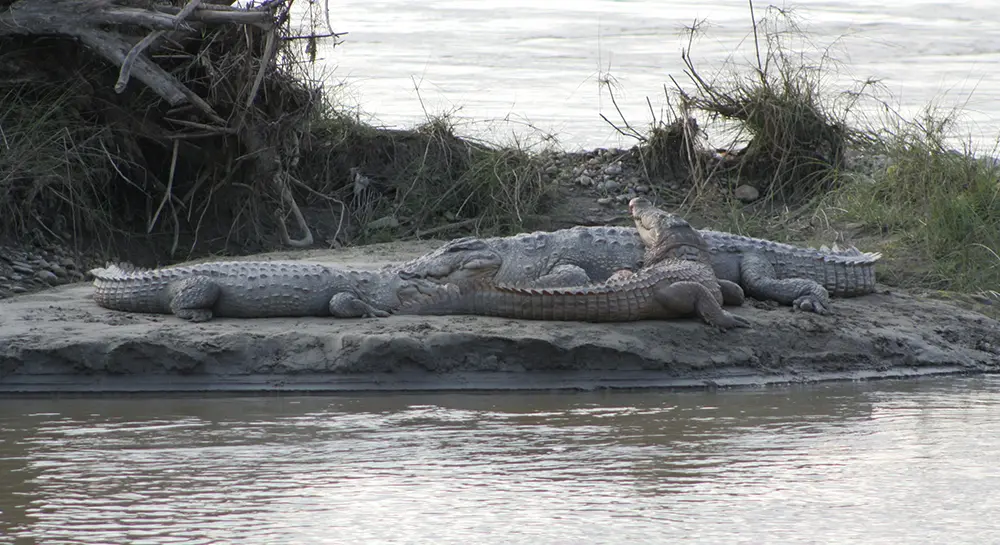
Migratory Birds
January is peak season for migratory birds in Chitwan. Ducks, storks, and numerous waterfowl arrive from Siberia and Central Asia, transforming wetlands into vibrant birdwatching havens. With over 500 bird species recorded, the park becomes a paradise for bird enthusiasts seeking rare sightings and spectacular photographic opportunities.
General Wildlife Activity
Mild winter temperatures in January encourage animals to remain active throughout the day. Observing wildlife in open areas is more common than in hotter months, when species tend to retreat to shade. Daytime safaris are particularly rewarding due to this natural behaviour, often spotting multiple species in a single trip.
Safari Experiences Available in January
- Jeep Safari: The most popular way to explore Chitwan, offering the best chance to spot big mammals like rhinos, deer, and even tigers in the park’s grasslands and forests.
- Canoe Ride: A calm and safe river journey, perfect for observing crocodiles, gharials, and diverse water birds along the Rapti and Narayani rivers.
- Jungle Walks: With January’s cool weather, guided treks become more comfortable and rewarding, giving visitors a closer look at plants, birds, and animal tracks.
- Elephant Safari (Optional): Once a traditional highlight, but now controversial, many lodges are shifting to ethical, elephant-friendly alternatives like bathing experiences.
Birdwatching Opportunities
January takes the title for the prime birdwatching season, with enthusiasts flocking from all around the globe to witness the majestic sightings at Chitwan National Park. This month witnesses truly perfect conditions for watching a host of resident and migratory birds, since the cool weather mingles with a dry climate. In January, thousands of migratory birds carpet the wetlands of Chitwan from Siberia and Central Asia, truly wonder-working sites for ornithologists and nature lovers.
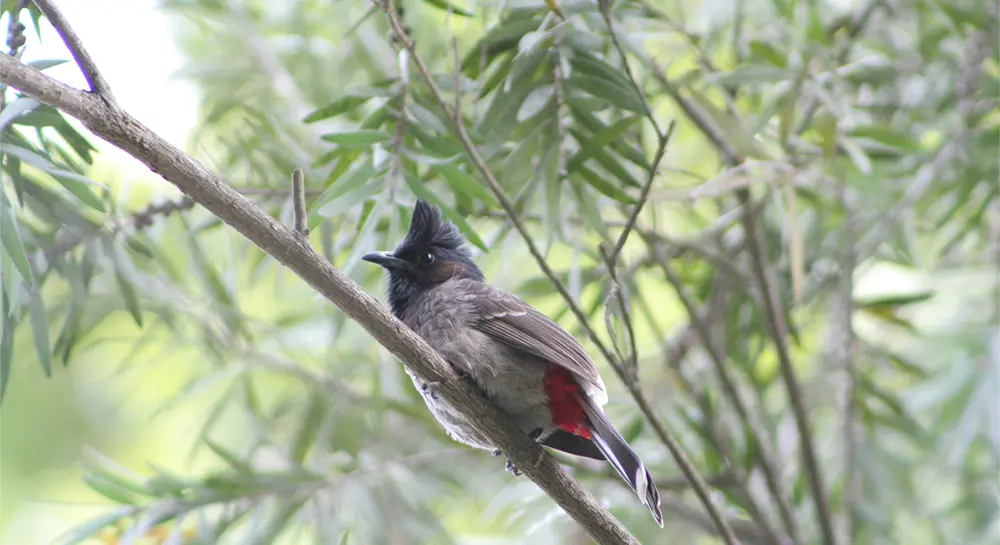
Some of the sightings include excellent looks at the fine beauty of the Ruddy Shelduck; the scarce, striking Lesser Adjutant Stork; kingfishers in all their glory; and hornbills soaring over the forest canopy. Birdwatching opportunities are excellent within Chitwan, particularly in the buffer region, such as along the riversides, wetlands, and community forests. January is the best time for canoeing on the Rapti River or walking in the jungle with a guide to see the wide variety of birds in the wild.
Cultural Experiences in January
In January, Chitwan’s Tharu Culture is another draw. Tourists can visit Tharu villages through guided tours, wherein traditional mud-and-thatched homes, customs abandoned for centuries, and hospitality would stand before them for an authentic cultural experience. Colourful Tharu dances present ancient heritage traditions and are usually accompanied by the rhythmic beating of drums and tramping feet.
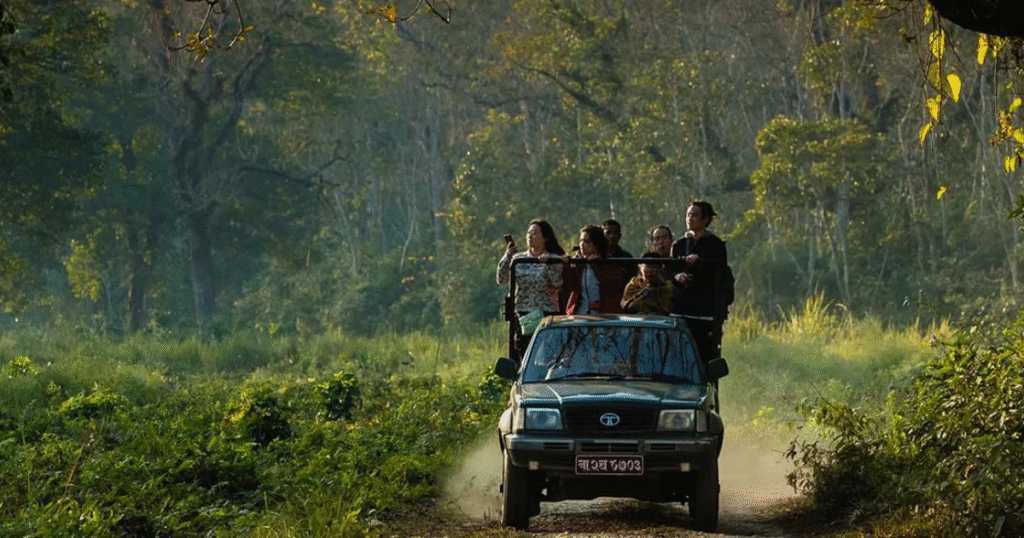
The winter period is also a time for local festivals, with mid-January seeing the celebration of one of the largest local festivities – Maghe Sankranti – that celebrates harvesting and longer and warmer days. During this period, villages erupt with socialising, performing ritualistic practices, and sharing joyous meals. The chillier weather also has its own charm while sampling the hearty Tharu food, such as dhikri – steamed rice flour dumplings – and spicy fish curries, allowing guests to literally taste local flavour along with their safari experience.
Practical Travel Information
Getting There: Chitwan is easily accessible both by road and air. A road journey from Kathmandu or Pokhara takes around 5–6 hours via the Prithvi Highway, offering scenic views of hills, rivers, and villages along the way. For a quicker alternative, travellers can take a 30-minute flight from Kathmandu to Bharatpur, followed by a short drive to the park.
What to Pack: January mornings and evenings in Chitwan are cool, so warm clothing is essential. Afternoons are pleasantly warm, making light, breathable clothes ideal for daytime safaris. Don’t forget binoculars and a camera to capture wildlife moments, as well as sunscreen and insect repellent to stay comfortable outdoors.
Accommodation: Chitwan offers a wide range of stays to suit every budget. Visitors can choose from eco-lodges and jungle resorts with modern amenities or opt for budget guesthouses in Sauraha and Meghauli, both popular bases for safari activities and cultural experiences.
Safety and Conservation Tips
- Join Guided Safaris: Always go with licensed naturalists who ensure safety, provide expert knowledge, and follow park regulations.
- Respect Wildlife Distance: Keep a safe distance from animals and avoid loud noises to prevent disturbance or potential danger.
- Support Conservation Awareness: Remember, Chitwan is a UNESCO World Heritage Site; respect rules and help spread awareness about protecting its biodiversity.
- Tourism’s Role in Protection: Responsible tourism contributes to anti-poaching initiatives and community programmes that safeguard endangered species.
Advantages of Visiting in January
There are several unique advantages of visiting Chitwan in January that make the safari exhilarating. In January, the weather is very comfortable, contrasting sharply with the muggy summer monsoon; mornings are cool while afternoons are warm, allowing travellers to engage in full-day activities without experiencing much discomfort. Another added advantage during winter is that mosquitoes and leeches tend to be fewer in number, thereby offering great relief throughout jungle walks.

Photographers are awarded visibility in January; skies are brighter, and light is sharp – highly excellent for capturing fine wildlife and landscape imagery. Dry vegetation and reduced grasses make animal spotting much easier, with rhinos, deer, and even tigers being spotted in abundance near open areas or water sources. All these combine to ensure very favourable safari conditions, making it one of the finest months to explore both the natural and cultural Chitwan National Park.
Conclusion of Chitwan Jungle Safari in January
January, indeed, ranks as one of the most excellent months for jungle safaris into Chitwan National Park. The weather is relatively pleasant, skies are clear, and landscapes are dry, which are all ideal for watching wildlife, soaking in culture, or engaging in outdoor activities. Tourists get away with experiencing a wonderful mix of sighting plenty of wildlife, from rhinos and crocodiles to migratory birds, while being enriched by lively Tharu traditions.
Pleasant conditions of no monsoon humidity, fewer insects, and excellent visibility make nature-watching more comfortable and worthwhile. Apart from the excitement of animal sightings, January warmly welcomes tourists with cultural hospitality and the refreshing calmness of nature. For those looking for that perfect blend of adventure, education, and culture, January is one sweet month. It’s time to explore the untamed depths of Nepal and experience the essence of Chitwan.


